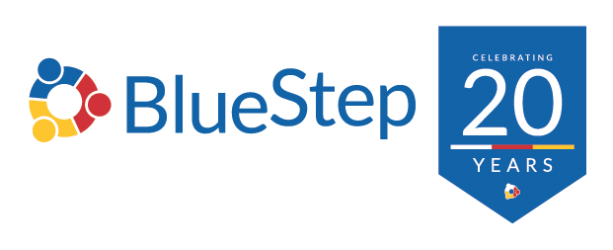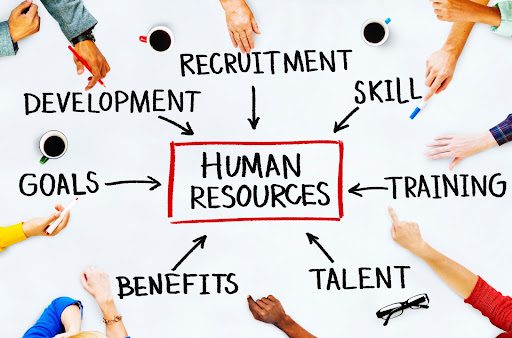In today’s landscape, pharmacies are at the nexus of innovation and service delivery. They must manage drug inventory, comply with regulations, and keep up with the demands of precision medicine.
With all this to manage, solutions beyond what’s traditional become necessary. Pharmacy solutions must be long-term, giving pharmacies what they need to thrive and best serve their customers.
In this insightful dive, we’ll explore the pivotal long-term pharmacy organizational solutions that address today’s challenges and are shaping the future of pharmacy operations and the pharmaceutical industry.
Join us as we unpack the transformative power of modern tools and strategies, laying the blueprint for a resilient, prosperous pharmacy ecosystem.
The Rising Complexity of Pharmacy Operations
The pharmaceutical industry has always been at the cutting edge of healthcare innovation. As our understanding of human biology and diseases deepens, there has been a consequent surge in the development and availability of new drugs.
While essential for improving healthcare outcomes worldwide, this progress has also introduced various challenges. Let’s take a closer look.
The Increasing Number of Drugs in the Market
Historically, drug development was a lengthy process, often taking many years and involving rigorous testing and evaluation before reaching the consumer. However, with advancements in research technologies, bioinformatics, and the rise of biotechnological interventions, the rate of drug approvals has significantly increased over the years.
This has both positives and negatives associated with it. On one side, patients have more options than ever before for treating many conditions. On the other, managing a more extensive inventory of medications brings about its own set of logistical challenges for pharmacies.
From ensuring the availability of new drugs to managing their storage and distribution, pharmacies now have to handle a much more diversified stock, which demands an advanced and adaptive inventory system.

The Challenge of Managing Various Regulatory Requirements
With the influx of new drugs, regulatory authorities worldwide have tightened their grip to ensure patient safety. These necessary regulations require constant vigilance for pharmaceutical companies and pharmacies.
Different drugs have varied regulatory requirements based on their composition, usage, and potential side effects. These regulations range from specific storage conditions, mandatory patient information sheets, or even restrictions on sale without specific documentation.
Growing Demand for Precision Medicine
Precision medicine is changing the face of healthcare and the pharmaceutical industry. It’s a tailored approach that treats individual patients based on genetic, environmental, and lifestyle factors. This personalized approach promises better outcomes by targeting treatments more accurately.
However, it also introduces complexities in pharmacy operations. Precision medicine often requires the availability of specialized drugs, some of which are used for a very niche set of patients.
That means pharmacies need to be equipped to store these specialized drugs, understand when and how these drugs should be dispensed, and coordinate with larger healthcare systems or diagnostic entities to ensure appropriate usage.
Furthermore, the data management associated with precision medicine is vast. Pharmacies and healthcare providers must securely store and manage a treasure trove of patient data, from genetic information to detailed medical histories.
Precision medicine demands robust digital systems that prioritize both data accessibility for healthcare providers and absolute security to maintain patient privacy.
Given the multifaceted challenges pharmacies now face due to the evolving landscape of drug development and healthcare, there’s an evident need for advanced, holistic solutions.
Pharmacies cannot rely solely on traditional methods and expect to stay efficient and competitive. The rising intricacies in inventory, regulatory compliances, and the embrace of precision medicine make it imperative for them to adopt innovative organizational tools and strategies.
As we recognize these challenges, it’s time to pivot our focus toward solutions that address these complexities head-on and position pharmacies for future growth and success. Let’s delve into these transformative solutions that are shaping the future of pharmacy operations.
Solution 1: Alerts and Warnings
It’s essential to be proactive when it comes to pharmacy operations. The Alerts and Warnings feature from the ManageRx app is part of that proactive approach.
Platforms like ManageRx serve as a critical component of modern pharmacy organizational solutions. Alerts and warnings from these platforms help prevent errors, increase compliance with regulations, manage inventory, and enhance patient safety.
- Error Prevention: Medication errors happen for several reasons, including incorrect dosages or drug-drug interactions. Regardless of the reason, medication errors sometimes come with severe consequences. These situations are where Alerts and Warnings come into play. These real-time alerts provide pharmacists with immediate notifications if there’s a potential mismatch or mistake, ensuring that the proper medication and dosage are dispensed every time.
- Inventory Management: With an increasing number of drugs in the market, managing inventory is a complex task. Automated alerts notify pharmacies when stock levels are low or nearing expiration, ensuring that medications are always available and minimizing wastage due to expired products.
- Enhancing Patient Safety: Beyond ensuring the correct drug is dispensed, alerts also notify pharmacists of patient-specific concerns. For instance, if a patient has a documented allergy or a known adverse reaction to a specific medication component, the system will alert the pharmacist as soon as that medication is scanned or entered.
Solution 2: Advanced Inventory Management Systems
Inventory management is a critical component of pharmacy organization, making Advanced Inventory Management Systems (AIMS) imperative for success. AIMS go beyond traditional stock-keeping methods. They leverage technology and analytics to optimize inventory levels, reduce waste, and improve efficiency. Let’s take a closer look:
- Real-time Stock Monitoring: With AIMS, pharmacies are able to keep a real-time tab on their stock levels. This immediacy allows for the quick identification of drugs that are running low, ensuring timely replenishment and avoiding situations where a patient’s medication is out of stock.
- Demand Forecasting: Advanced systems employ predictive analytics based on historical sales data, seasonal trends, and other relevant factors. This capability allows pharmacies to anticipate demand surges or drops, facilitating better stock planning and reducing holding costs.
- Expiration Tracking: Wastage due to expired medications is a significant concern for pharmacies. AIMS automatically tracks expiration dates and sends alerts for products nearing the end of their shelf life. This prompts pharmacists to either promote their usage or safely dispose of them.
- Utilizing Space Efficiently: These systems provide insights into the movement and turnover of products, allowing pharmacies to optimize shelf space. It becomes easy to position fast-moving drugs for easy access while slower-moving ones can be allocated less prime real estate. This type of organization leads to more efficient use of space and faster service times.

Solution 3: Regulatory Compliance Management Platforms
In the pharmaceutical world, regulatory compliance isn’t merely an operational aspect; it’s central to ensuring patient safety, maintaining trust, and achieving business continuity. As regulations grow in complexity and vary across jurisdictions, the need for specialized tools to manage this maze becomes paramount.
Regulatory Compliance Management Platforms (RCMP) rise to this challenge, providing a framework that addresses immediate compliance needs and sets pharmacies up for long-term success. Here’s a deep dive into how RCMP are integral as a long-term pharmacy organizational solution:
- Centralized Repository: RCMP acts as a centralized hub, storing all relevant regulatory documents, guidelines, and policies. This unified approach ensures pharmacies have a single data source, minimizing confusion and enhancing efficiency.
- Real-time Updates: Regulatory landscapes are dynamic, with frequent updates, revisions, or additions. RCMP provides real-time notifications of these changes, ensuring pharmacies remain updated and can implement required modifications swiftly.
- Automated Reporting: Regular reporting is a staple of many regulatory frameworks. With RCMP, pharmacies can automate the generation and submission of these reports, reducing manual errors and ensuring timely submissions.
- Audit Readiness: With stringent regulatory oversight, audits are a regular occurrence for many pharmacies. RCMP streamlines the audit process by maintaining detailed logs of compliance activities. This streamlining allows for quick retrieval of any requested documentation or data.
Solution 4: Scalable Cloud Solutions
The technological evolution in the healthcare and pharmaceutical sector has been nothing short of revolutionary. Among the various pharmaceutical innovations, cloud computing stands out as a transformative force that’s redefining how pharmacies operate.
Scalable cloud solutions are no longer merely a buzzword; they are a fundamental component for pharmacies that aim for adaptability, efficiency, and long-term sustainability. Here’s how these cloud solutions present themselves as an enduring organizational solution for pharmacies:
- 24/7 Access: Cloud solutions offer the unparalleled advantage of accessing critical data and applications from anywhere, provided that there’s internet connectivity. This flexibility is crucial for pharmacies with multiple branches or pharmacists who need to work remotely.
- Cost Efficiency: Traditional IT infrastructures demand hefty upfront costs for hardware, software licenses, and associated maintenance. With their ‘pay-as-you-go’ models, Scalable cloud solutions drastically reduce these initial expenditures, allowing pharmacies to allocate resources more judiciously.
- Enhanced Data Security: Renowned cloud service providers invest significantly in state-of-the-art security protocols. By leveraging cloud solutions, pharmacies benefit from advanced encryption, multi-factor authentication, and regular backups, ensuring their sensitive data remains protected.
Long-Term Pharmacy Solutions With BlueStep Systems
Navigating the intricacies of the pharmaceutical landscape requires knowledge and the right tools. BlueStep Systems understands this nexus and has crafted ManageRX, an innovative solution tailored to today’s dynamic pharmaceutical needs.
If you’re seeking to elevate your operations and position your organization at the forefront of the industry, take advantage of the transformative capabilities of ManageRx.
Request a demo, and let us guide you through a personalized exploration of how ManageRx can be the perfect fit for your pharmaceutical journey.





